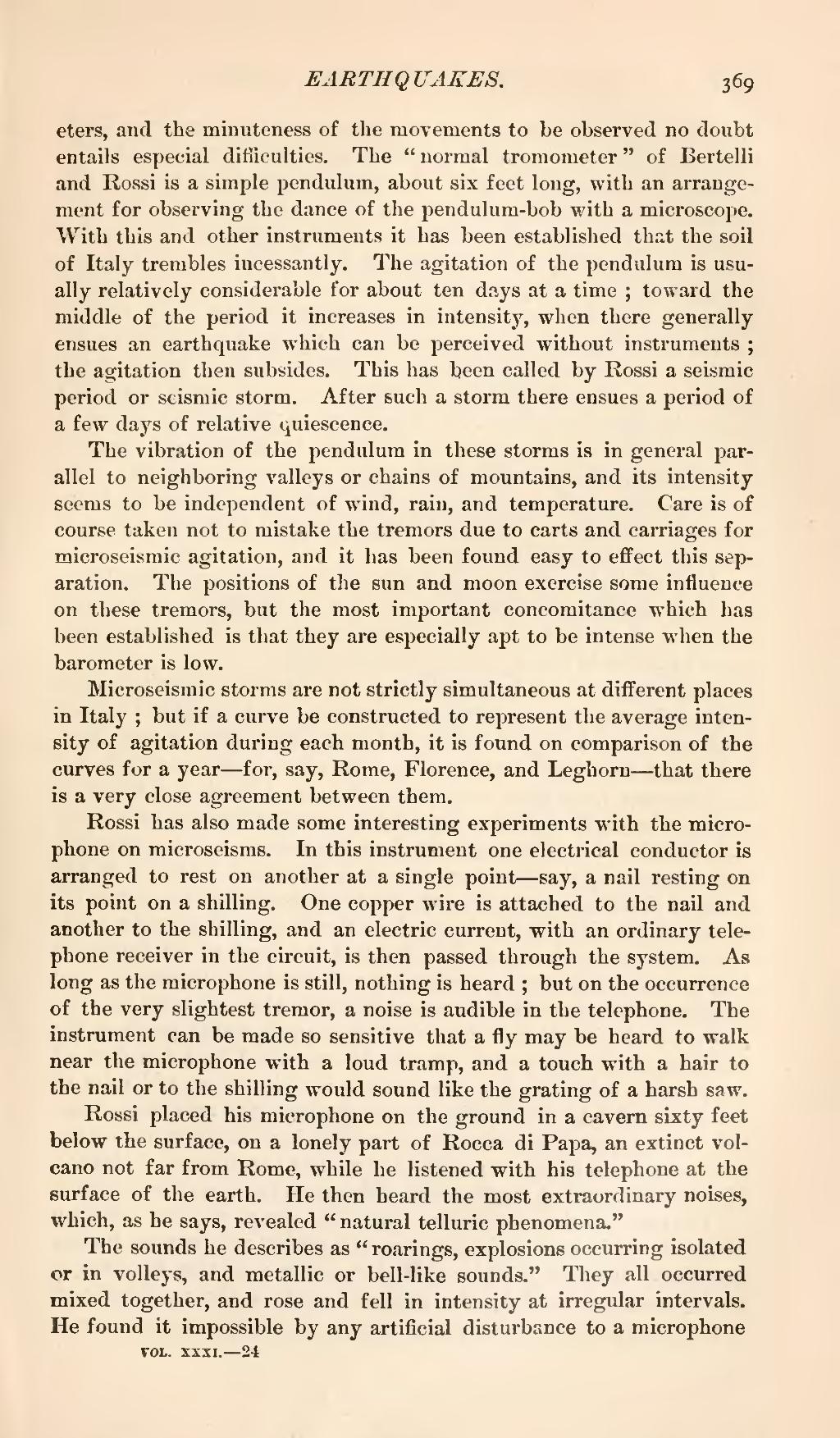eters, and the minuteness of the movements to be observed no doubt entails especial difficulties. The "normal tromometer" of Bertelli and Rossi is a simple pendulum, about six feet long, with an arrangement for observing the dance of the pendulum-bob with a microscope. With this and other instruments it has been established that the soil of Italy trembles incessantly. The agitation of the pendulum is usually relatively considerable for about ten days at a time; toward the middle of the period it increases in intensity, when there generally ensues an earthquake which can be perceived without instruments; the agitation then subsides. This has been called by Rossi a seismic period or seismic storm. After such a storm there ensues a period of a few days of relative quiescence.
The vibration of the pendulum in these storms is in general parallel to neighboring valleys or chains of mountains, and its intensity seems to be independent of wind, rain, and temperature. Care is of course taken not to mistake the tremors due to carts and carriages for microseismic agitation, and it has been found easy to effect this separation. The positions of the sun and moon exercise some influence on these tremors, but the most important concomitance which has been established is that they are especially apt to be intense when the barometer is low.
Microseismic storms are not strictly simultaneous at different places in Italy; but if a curve be constructed to represent the average intensity of agitation during each month, it is found on comparison of the curves for a year—for, say, Rome, Florence, and Leghorn—that there is a very close agreement between them.
Rossi has also made some interesting experiments with the microphone on microseisms. In this instrument one electrical conductor is arranged to rest on another at a single point—say, a nail resting on its point on a shilling. One copper wire is attached to the nail and another to the shilling, and an electric current, with an ordinary telephone receiver in the circuit, is then passed through the system. As long as the microphone is still, nothing is heard; but on the occurrence of the very slightest tremor, a noise is audible in the telephone. The instrument can be made so sensitive that a fly may be heard to walk near the microphone with a loud tramp, and a touch with a hair to the nail or to the shilling would sound like the grating of a harsh saw.
Rossi placed his microphone on the ground in a cavern sixty feet below the surface, on a lonely part of Rocca di Papa, an extinct volcano not far from Rome, while he listened with his telephone at the surface of the earth. He then heard the most extraordinary noises, which, as he says, revealed "natural telluric phenomena."
The sounds he describes as "roarings, explosions occurring isolated or in volleys, and metallic or bell-like sounds." They all occurred mixed together, and rose and fell in intensity at irregular intervals. He found it impossible by any artificial disturbance to a microphone

